Issue No. 30: Of Ancient Pharoi & Anglo-Norman Parapets, Part One
The ruins of England's tallest Roman building, a contender for its largest castle, and the siege that prevented a French prince on the English throne.
As the dispute between king and country escalated as John captured rebel-held castles, some of John’s nobles revolted and offered the English throne to an unlikely candidate: [the French king] Philip’s son Louis.
On May 31, 2018, my then-boyfriend and I arrived in the lovely British seaside town of Dover, famous for its brilliant ivory cliffs of chalk and a massive sprawling fortress perched on cliffs overlooking the English Channel. It’s been a few years, but I’m positive I vibrated with excitement like a kid on waaaay too much sugar, as I had dreamed of visiting Dover Castle for years.
The following day, on June 1, we meandered our way through the curtain walls, the Great Keep, the underground World War II tunnels, and, most importantly for me, the famous Roman lighthouse (or pharos) and the restored Anglo-Saxon church of St. Mary-in-Castro.
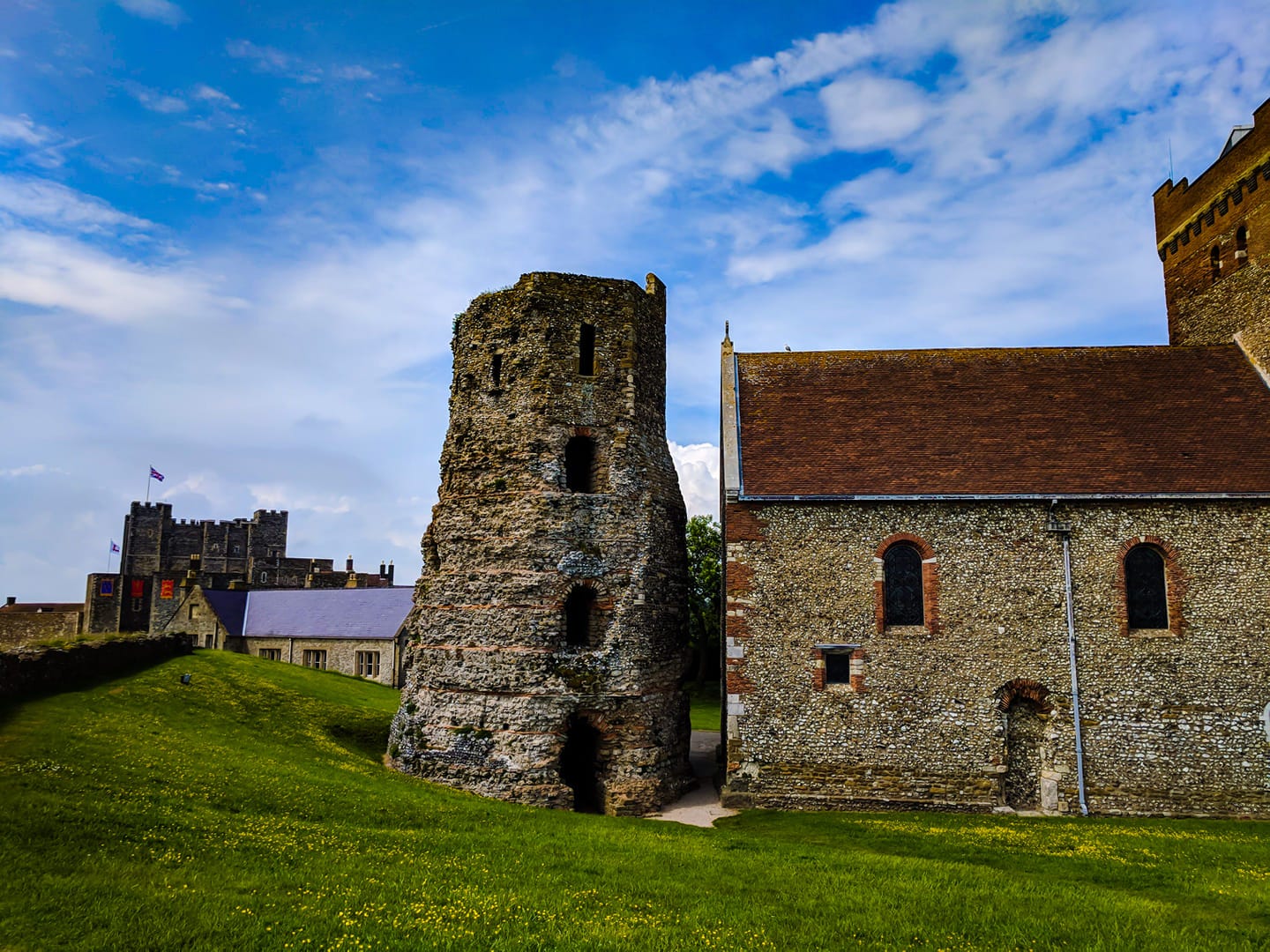
The trip would come to hold a particular place of pride in my memory - that’s where my then-boyfriend became my then-fiancé, and the rest is, as they say, history.
But why Dover, celebrated as the “Key to England”?
Dover Castle bears the distinction of being one of Great Britain’s largest castles1 and sits at the narrowest crossing between England and France, perfect for facilitating trade but also planning an invasion. Traces of its storied past - from a possible Iron Age fortification to a World War II bunker - reveal that Dover Castle has played a pivotal role in England’s defense, guarding its shores from invasions of all kinds over the ages.
Given this, I’ve chosen to center this post’s theme on the castle’s role as protector - though many aspects of its existence are equally as important. In the interest of brevity, I highlight one event which showcases the castle’s strategic importance: the sieges of Dover during the First Barons’ War (1215-1217). I plan to offer a part two on Operation Dynamo in the next post.
Dover Castle as England’s Protector
Dover Castle Prior to the Twelfth Century
Roman & Anglo-Saxon Periods
Dover Castle’s history easily spans two millennia. It’s thought that earthen works found on the site mark the location of an earlier Iron Age hillfort, given that the layout of the medieval structures follow an irregular pattern instead of a more traditional one.2
In 43 AD, the Romans, under the emperor Claudius, invaded and conquered England.3 Under Roman occupation, a settlement and port developed on the site of the old hillfort, one the Romans called Dubris, or “water”. The harbor, tucked between cliffs on its western and eastern sides, facilitated trade between England and the Continent.
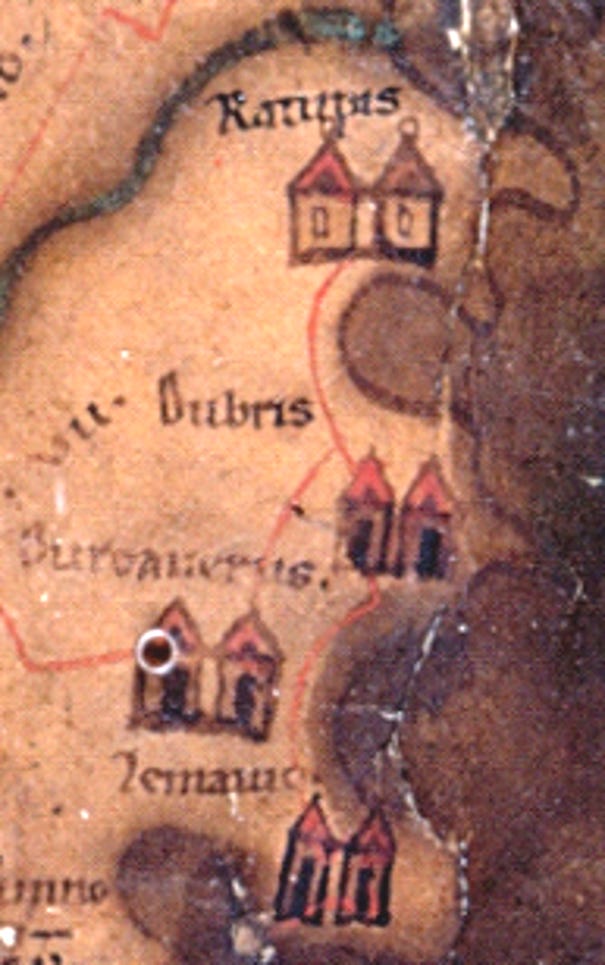
Around 130 AD, the Romans completed construction of a fort for protection as well as a pharos (or lighthouse) on each height to guide ships into Dubris’ port. The western pharos remains standing to this day, a tangible reminder of Dover’s Continental origins.4 According to Google Arts & Culture, it’s also the largest extant Roman building in Britain. Other known Roman remnants and extant ruins include a dwelling (known as the Roman “painted house”), a Saxon Shore fort, a harbor wall, and a bath house.
After the Romans departed, Dover’s inhabitants repurposed the pharos into a belltower for the Church of St. Mary-in-Castro. The Saxons built the church in the tenth century. 1962 excavations surrounding late Saxon graveyard have led to speculation that Dover may have also been the site of an Anglo-Saxon burh, or fortified settlement. St. Mary-in-Castro has been used for religious services ever since (save for between 1780 and 1808 when it operated as a cooperage and storehouse and between c. 1808 and 1860 when it stored coal).
Norman & Angevin Periods
By the eleventh century, the site of Dover had gained a reputation as a highly defensible and strategic location, a fact well recognized by William the Conqueror. In 1066 - in the aftermath of the Battle of Hastings - he made his way to Westminster Abbey in London for his coronation. Part of his circuitous route took the Conqueror to Dover. The soon-to-be-king ordered its submission to his rule, but things didn’t pan out the way he might have expected. The chronicler William of Poitiers recorded that William’s men, eager for loot, set the castle on fire:
“Then he [William the Conqueror] went to Dover, where he heard a great multitude had gathered because the place seemed impregnable. But the English, terror-stricken at his approach, lost all confidence in the natural defenses of the place, and in the multitude of men. This castle stands near to the sea on a rock which is naturally steep on all sides, and has furthermore been patiently chipped away with iron tools, so that it is like a wall of towering height equal to the flight of an arrow on the side washed by the sea. When, however, the garrison were preparing to make the humble surrender, the squires in our army, greedy for booty, set the place on fire. The volatile buildings spread quickly and took hold of most buildings. The duke, not wishing to injure those who had begun to parley with him for surrender, paid for the repair of the buildings and gave compensation for other losses…After the surrender of the castle, he spent eight days in fortifying it where it was weakest.5
William built another fortification at Dover, but with no surviving ruins or remains, it’s hard to pinpoint its exact location. It’s not until the 12th century that the castle grew into its majestic, imposing presence we recognize today.
King Henry II of England (r. 1154-1189) expanded Dover Castle from what might have been one of William’s traditional motte-and-bailey castles into a formidable bastion. The improvements included a massive stone keep measuring 83ft (25m) high, 100ft (30m) square, an inner and outer bailey, and massive curtain walls up to 20ft (6m) thick in places.6 This proved a very far cry from the castle’s earlier iterations.
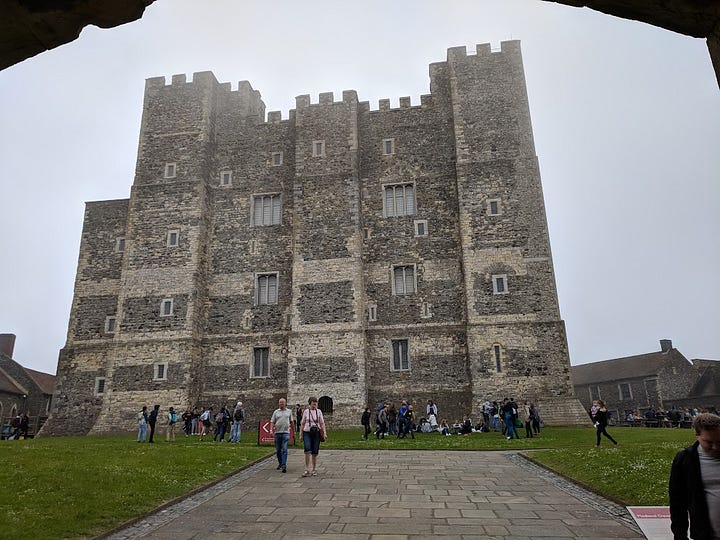

Henry had impeccable timing, however, as foreign adversaries soon tested Dover’s new defenses.
The Siege of Dover During the First Barons’ War
In 2024, Catherine Hanley released a remarkable book covering the First Barons’ War (1215-1217), a conflict that arose between King John of England (r. 1199-1216) and his French-allied rebel magnates. The war’s crux revolved around John’s failed military machinations against King Philip II of France and his refusal to recognize and abide by Magna Carta, the 1215 charter in which John promised to uphold and protect the lands and rights of his barons.
As the dispute between king and country escalated as John captured rebel-held castles, some of John’s nobles revolted and offered the English throne to an unlikely candidate: Philip’s son Louis. Louis held his tenuous claim to the throne through jure uxoris, by right of his wife Blanche of Castile, Henry II’s granddaughter and John’s niece. The prince accepted, sending some 140 knights to England in December 1215. This served as the precursor for further military action between Louis and John, and, later, a young Henry III.
The First Siege (July-October 1216)
In May 1216, Louis crossed the English Channel, landing on the Kentist coast at Sandwich. The prince campaigned in early spring and summer, ultimately holding London and other large tracts of English land.7 On July 25, 1216, Louis, pressing his advantage, moved to attack and later besiege Dover Castle for its importance in safeguarding the transport of French men and supplies into the country.8
Fortunately for the Dover garrison, a very capable castellan helmed the castle’s defenses: Hubert de Burgh. Born from minor gentry, de Burgh was, as Hanley describes him, “an experienced administrator, a hardened military veteran…and - crucially - John’s proven loyal man.”9 It’s not hard to surmise that John felt reasonably confident that his castellan would succeed.
Over the next three months, Louis and his men made some headway. Initially, the French forces concentrated their efforts on Dover Castle’s well-fortified northern gate, which was protected by a wooden barbican.10 If they managed to capture or destroy the barbican, the French would have access to the main gate.
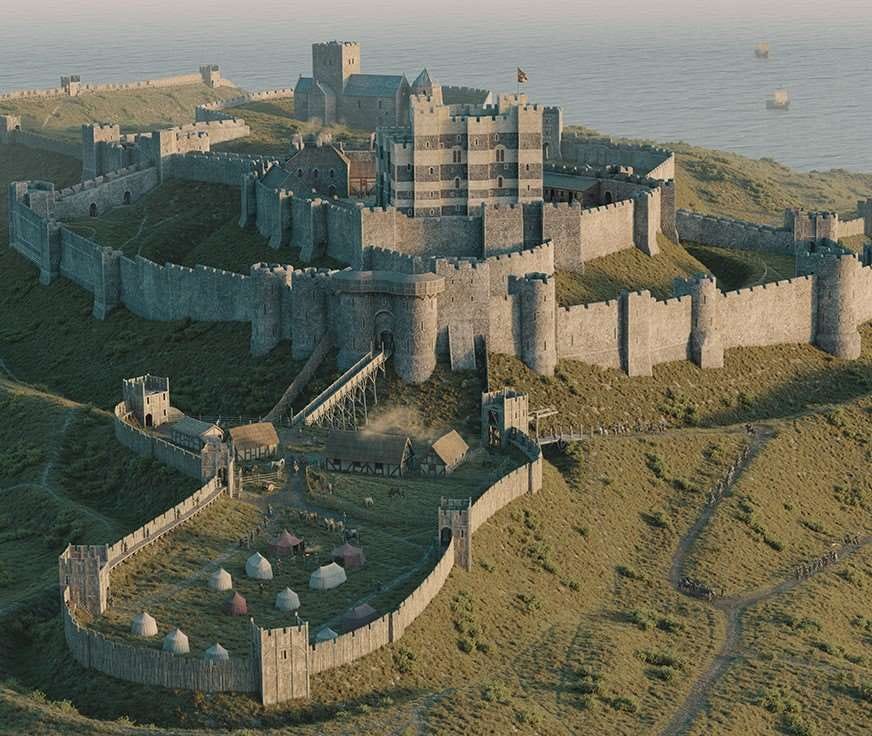
The French succeeded in destroying the barbican by bombarding it with siege machinery. De Burgh and his men valiantly defended it to the best of their abilities but were ultimately forced to retreat deeper within the castle’s fortifications.
The throne’s pretender then turned his attention to the main gate. He instructed miners to tunnel under one of the gate’s towers, shore it up with wooden supports, and then ignite the supports. The tunnel collapsed as a result, taking the eastern gate with it. The French soldiers, frustrated due to the relative lack of activity in the preceding weeks, poured through the wall into the outer bailey, and a fierce battle ensued.
“They were, however, vigorously repulsed,” the chronicler Anonymous of Béthune relates, “and the defenders began blocking up that part of the wall that had collapsed with huge beams, cross joists and heavy oak stakes.”11 De Burgh’s apt defense paid off; the Dover garrison continued to hold off the French.12
In the midst of this military turmoil, John the Terrible joined those veteran players of Oregon Trail and died of dysentery at Newark on October 19, 1216. England’s future quite literally hung in the balance due to the sudden and swift change of events. An uneasy truce emerged for the time being, but this would not last forever.13
The Second Siege & the Battle of Sandwich (May-August 1217)
The Second Siege of Dover
The tides of war ebb and flow, and 1217 proved no different. At the onset of the First Barons’ War, Louis - bolstered by French and rebel baronial troops - stood a very real chance of ascending the English throne. And yet, the second siege of Dover and the Battle of Sandwich stymied those ambitions.
In April 1217, Louis - who had briefly left England - returned and attempted to land at Dover with his fleet. However, a sortie led by William of Cassingham, Oliver FitzRoy, and others prevented this and attacked the siege camp outside of the castle walls.14 Louis eventually arrived at Dover on May 12, 1217, and once again besieged the castle. This time around, he included more siege machinery, including a trebuchet (the first known mention of such a weapon on English soil).
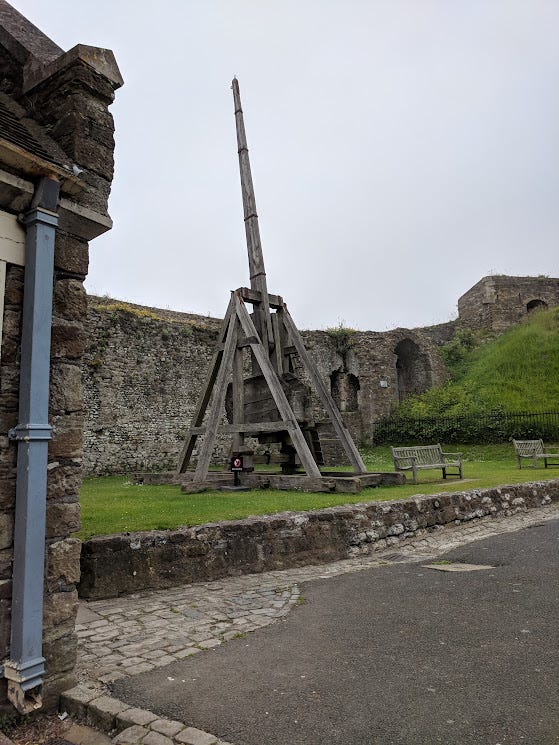
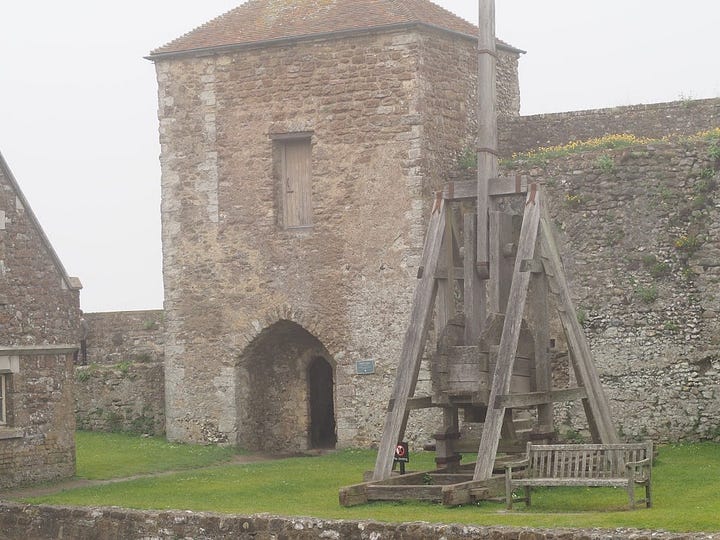
The second siege of Dover lasted only two weeks, due in part to a massive royalist victory at the Battle of Lincoln (which had left Louis’ forces split).15 These two victories, along with waning support among the rebelling barons among other reasons, slowly rang the death knell for Louis’ campaign. The final straw came with the Battle of Sandwich in August 1217.
The Battle of Sandwich
Across the Channel in France, Blanche of Castile - the prince’s wife - spent months gathering funds, supplies, and additional troops with which to reinforce her husband’s campaign in England. At first, Blanche sent small groups of ships as the larger army gathered. Throughout 1217, the English navy, under the command of one Philip d’Albini, and capricious weather swiftly repelled these reinforcements.

Eventually, however, the bulk of the French army readied to make the oft-treacherous journey across the Channel. On August 24, 1217, the fleet departed from Calais, France. A clergyman-turned-buccaneer named Eustace the Monk captained the French fleet while Robert de Courtenay - Louis’s distant cousin - commanded the soldiers. A formidable and cruel man, Eustace’s allegiances vacillated between England and France, and in 1217, his “loyalty” lay with Louis and the French king Philip Augustus.16
The French armada sailed towards the Thames estuary in an effort to make their way towards London, the strategic location held by Louis. Initially, the English fleet allowed them to pass unharassed. Hubert de Burgh feinted an attack against French but accidentally overshot the enemy, ending up farther afield than intentioned.17 The French cried out in contempt as it seemed to them that de Burgh sought to avoid conflict.18 Their bravado, however, would not last for long.
Once the French ships passed the English, the defenders turned about and gained a more advantageous position with the sun and wind behind them. Though some details remain unclear, the English ships moved to engage the French in combat. The primary target? The Monk’s flagship, known as the “great ship of Bayonne”. Destroying or capturing this ship would effectively cut off the head of the snake, and the battle’s key engagement began when Richard of Chilham - an illegitimate son of King John - rammed the great ship of Bayonne.

Battle joined as other ships - including a cog under the command of the English regent and statesman William Marshal19 - caught up, and the English defenders swarmed the ship's deck. Fighting proved difficult as both sides engaged with each other on the crowded and rolling deck. The Monk disappeared belowdecks, and it’s not a far stretch to surmise what happened next.
Eustace was caught and offered what Hanley calls a “ludicrous sum” for his release - ten thousand marks, a quarter of the English crown’s income.20 The English denied this and swiftly beheaded the notorious pirate. With their leader struck down and the flagship captured, the French - who fought as best they could - ultimately lost the day.
None of the larger vessels were captured, as they took advantage of their superior speed to make off. Of the smaller craft a large number were wrecked, and the people captured in them were unceremoniously slaughtered. What more need I say? The defeat was overwhelming, and the English spent a long time pursuing the enemy before returning to Sandwich with their prisoners and their booty ̶ which was considerable. The knights were held prisoner in comfortable conditions in the town, while Eustache le Moine’s [Monk’s] head, stuck on the end of a pike, was taken to Canterbury and paraded there, before being put on display throughout the whole of the surrounding area.21
The Battle of Sandwich was the last large-scale engagement in the First Barons’ War. In September 1217, England and France signed the Treaty of Lambeth. In exchange for forfeiting his claim to the English throne and desist in his military incursions, Louis received 10,000 marks. Thus ended one of the most serious attempts at a foreigner seizing the English throne - and almost succeeding - and Dover Castle played a prominent role in preventing this event to pass.
Suggested Reading: 1217 by Catherine Hanley
I know, I’m probably beating you over the head about Catherine Hanley’s 1217. I do so because Hanley’s meticulous research and talent for interweaving narrative and facts made 1217 one of the best books I read this year.
The First Barons’ War seemingly receives little attention in the historiography of medieval England (I had never heard of it prior to reading this book). In case you missed it, here’s the June review I wrote of 1217.
1217 provides a comprehensive overview of the First Barons’ War from the tensions of King John and his barons down to the Treaty of Lambeth. Hanley’s masterwork, resonating with military drama and intrigue, royal feuds, political seesawing, and engrossing historical characters, is a true tour de force. I had a few minor critiques about 1217, but I think it excellently introduces anyone interested in medieval history or medieval warfare to a lesser-known historical topic.
Related Artifact: Saxon Ring, c. 550 AD
As noted above, Dover’s colored history included occupation by the Anglo-Saxons, whose presence shows all through the town. One artifact dating from that time is a lovely golden quatrefoil ring studded with garnet. Excavators found this ring in 1972 near Dover’s Market Street, and it may have belonged to a senior nobleperson from the kingdom of Kent. This ring resides in the Dover Museum (a cultural heritage museum I highly recommend visiting, by the way!).
Artifact Description
Title: Saxon Ring
Artist: Unknown
Materials: Gold, quatrefoil design, garnet
Date: c. 550 AD
Collection: Dover Museum
Sources & Further Reading
Primary
Anonymous of Béthune. History of the Dukes of Normandy and the Kings of England. Trans. by Ian Short from the Anglo-Norman Texts Society. https://www.anglo-norman-texts.net/wp-content/uploads/2020/01/Anonyme-de-Bethune.pdf (accessed November 20, 2024).
Poitiers, William of. The Gesta Guillelmi of William of Poitiers. Ed. and trans. by R.H.C. Davis and Marjorie Chibnall. Oxford Medieval Texts. Oxford and New York: Clarendon Press, 1998. https://archive.org/details/gestaguillelmiof0000guli (accessed November 12, 2024).
Secondary
Cannon, Henry Lewin. “The Battle of Sandwich and Eustace the Monk”. English Historical Review 27 (1912): 649-670. https://deremilitari.org/wp-content/uploads/2014/02/cannon.pdf (accessed December 3, 2024).
Hanley, Catherine. “The Siege of Dover: THE KEY TO ENGLAND.” Medieval Warfare 7, no. 2 (2017): 16–23. https://www.jstor.org/stable/48578158.
- 1217: The Battles That Saved England. Oxford: Osprey Publishing, 2024.
Heiser, Richard R. “Castles, Constables, and Politics in Late Twelfth-Century English Governance.” Albion: A Quarterly Journal Concerned with British Studies 32, no. 1 (2000): 19–36. https://www.jstor.org/stable/4053985.
Pattison, Paul. “History of Dover Castle.” English Heritage. History and Stories. https://www.english-heritage.org.uk/visit/places/dover-castle/history-and-stories/history-dover/ (accessed November 12, 2024).
- “The Sieges of Dover Castle 1216-17.” English Heritage. History and Stories. https://www.english-heritage.org.uk/visit/places/dover-castle/history-and-stories/the-sieges-of-dover/ (accessed November 12, 2024).
Featured image: The Roman pharos alongside St. Mary-in-Castro, with Dover Castle in the background, June 2018. Image taken by the author.
Some say Dover Castle is England’s largest; some say that honor belongs to Windsor Castle.
National Monuments Record, "MONUMENT NO. 468006", English Heritage. Archived from the original on 27 February 2014.
Previous invasions under Julius Caesar had failed to establish a permanent foothold on the island. For a brief but detailed overview of the Julian and Claudian invasions, I recommend Paul Pattison’s write-up over at English Heritage and Julius Caesar’s Commentaries on the Gallic Wars, Book 4, section 23, for specific information on reaching Dover.
Much smaller ruins remain of the Eastern Heights pharos. This is known as the Bredenstone or Devil’s Drop of Mortar. Pretty ominous name, eh?
William of Poitiers, The Gesta Guillelmi of William of Poitiers, Ed. and trans. by R.H.C. Davis and Marjorie Chibnall (Oxford Medieval Texts. Oxford and New York: Clarendon Press, 1998), Book 47, 183-185.
Catherine Hanley, “The Siege of Dover: THE KEY TO ENGLAND,” Medieval Warfare 7, no. 2 (2017), 16, https://www.jstor.org/stable/48578158 (accessed November 15, 2024).
Please don’t despise me for my subtle reference to Monty Python and the Holy Grail…
Paul Pattison, “The Sieges of Dover Castle 1216-17,” English Heritage, History and Stories, https://www.english-heritage.org.uk/visit/places/dover-castle/history-and-stories/the-sieges-of-dover/ (accessed November 12, 2024).
Catherine Hanley, 1217: The Battles That Saved England (Oxford: Osprey Publishing, 2024), 58.
The Flemish chronicler the Anonymous of Béthune described the barbican as “a very strong oak palisade and a deep ditch round it.”
Anonymous of Béthune, History of the Dukes of Normandy and the Kings of England, trans. by Ian Short from the Anglo-Norman Texts Society, https://www.anglo-norman-texts.net/wp-content/uploads/2020/01/Anonyme-de-Bethune.pdf (accessed November 20, 2024).
Hanley eloquently explains the knife’s edge on which the Dover garrison walked: “This was the most crucial moment to date in the defence of Dover. If the garrison could not hold their position now, they would be forced back from the outer curtain wall into the much smaller confines of the inner bailey and the keep, allowing the French to surround them completely and bring their siege machinery close enough to cause devastating damage. The likelihood of them being able to hold out for any length of time in such circumstances would be slim. The future of Dover, and perhaps the kingdom itself, hung in the balance…” (p. 75).
English and French/rebel forces skirmished during the “truce”, but this out a bit outside of the scope of this article. I highly recommend this article from The Freelance History Writer about William of Cassingham and his activities in the Weald and near Dover during this time.
See note 13.
I wrote a bit on one of the heroines of the Battle of Lincoln, Nicola de la Haye, in a previous article.
Hanley, 1217, 175-176. Hanley specifically comments on Eustace’s notoriety, writing, “Eustace was the most dangerous man on either side during the war, for the simple reason that he had no fixed allegiance and, from what we can gather, very little conscience” (p. 176).
Henry Lewin Cannon, “The Battle of Sandwich and Eustace the Monk”, English Historical Review 27 (1912), 63.
Cannon, “The Battle of Sandwich,” 663; Hanley, 1217, 182-183.
William Marshal plays an incredibly important and pivotal role during the reigns of five English kings, including John and Henry III. Like Eustace the Monk, further exploration is outside of the breadth of this post, but
Hanley, 1217, 190.
Anonymous of Béthune, History, 51.





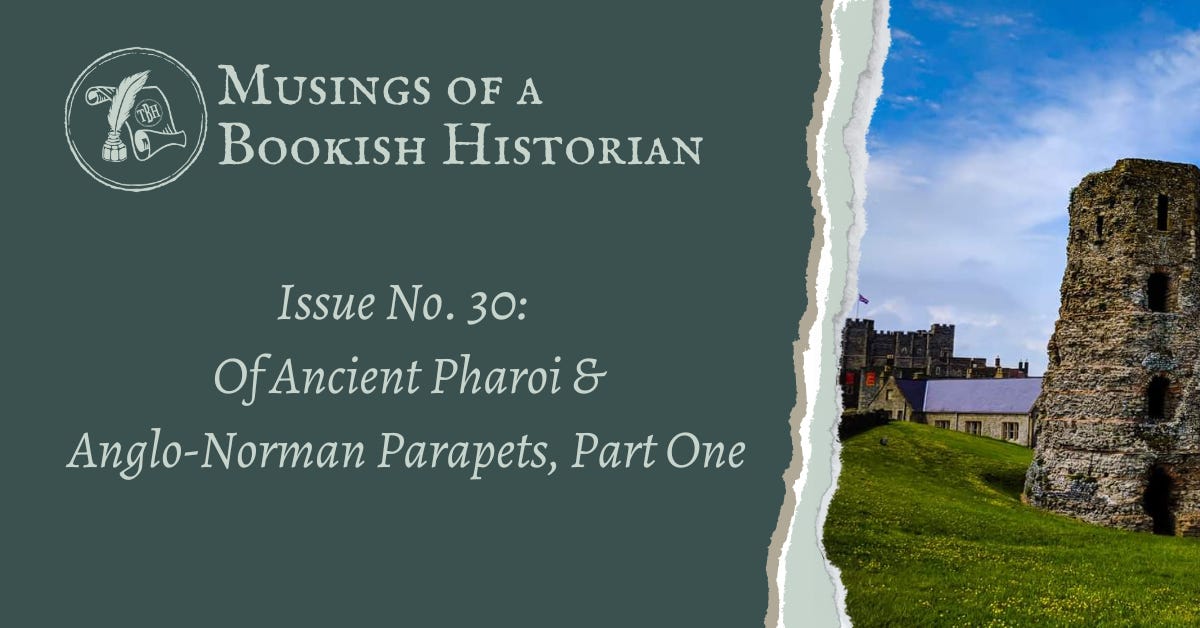

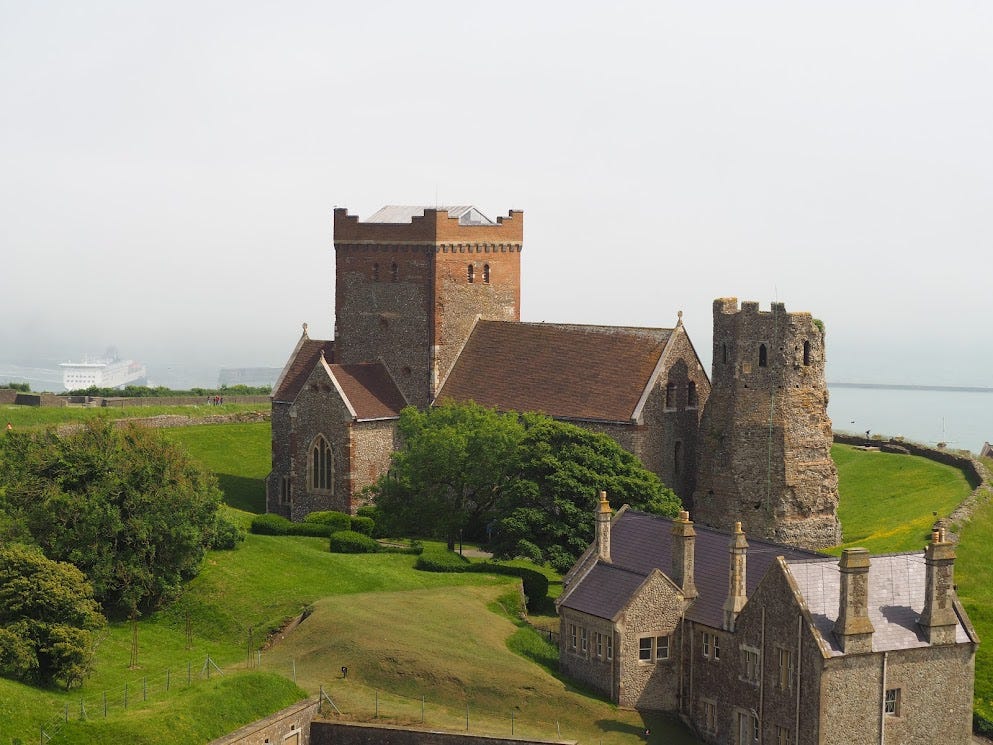
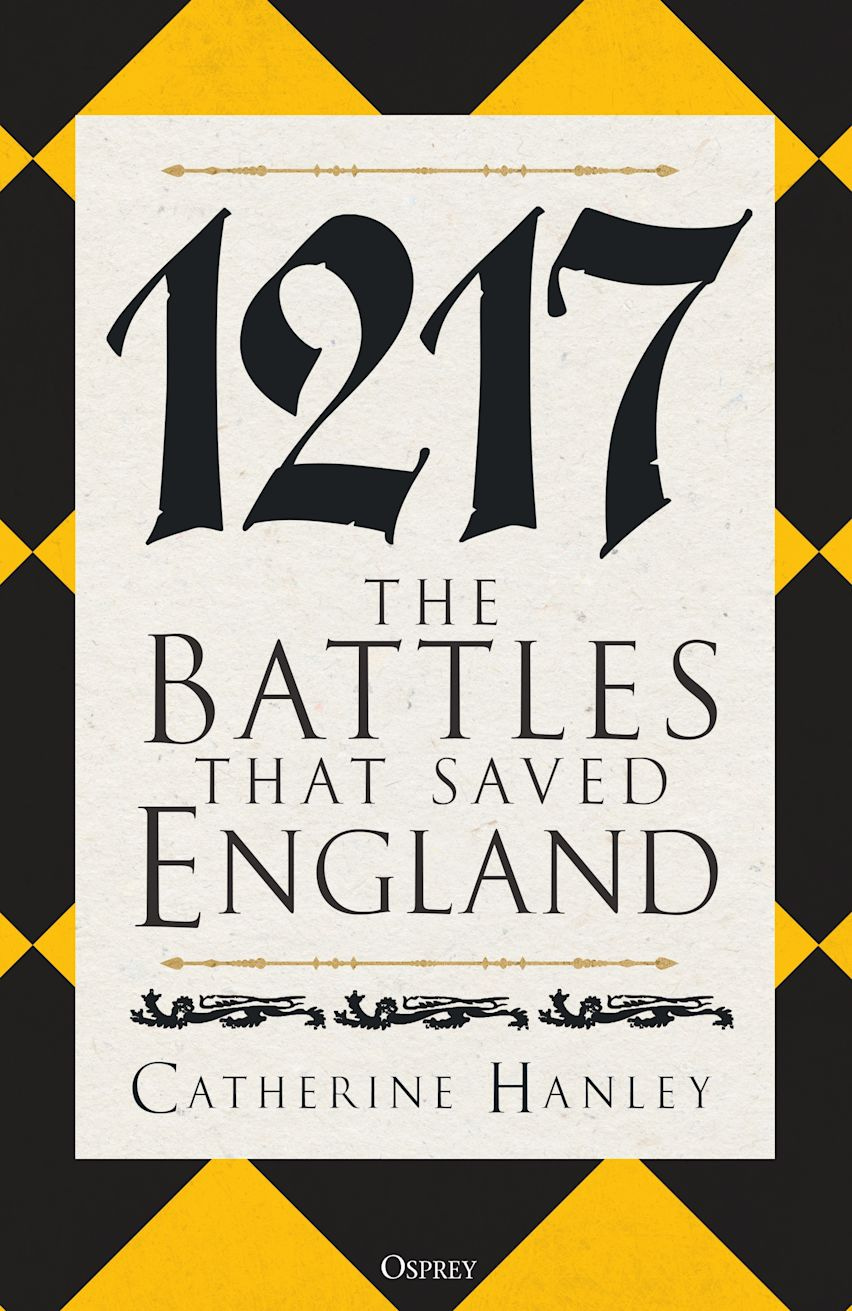

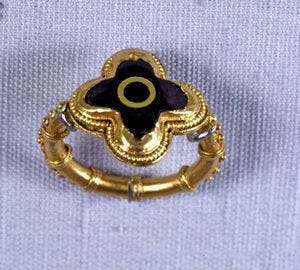
Thank you for such a detailed and interesting article, Amy! I’ve always been intrigued by the remaining Roman/Saxon architecture at Dover, and I didn’t know about the gold ring. Fascinating!
Have you seen King John called John the Terrible elsewhere or is that your name for him? I've never seen him called that!